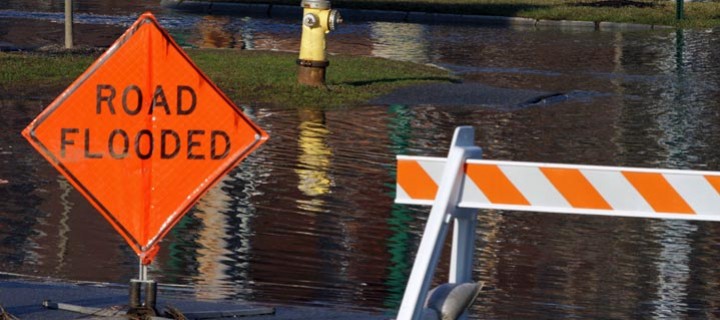How Flooding Affects Your Town
- Home
- Team EJP Blog
- How Flooding Affects Your Town
- Apr 17, 2014 9:00:00 AM
- Everett J. Prescott

As the snow melts away in late winter and early spring, seasonal flooding and resultant property damage becomes a serious concern. Our communities are most fortunate when the snow cover melts slowly and spring rain events are few and far between. These conditions create what we call an orderly run off, or one that will not result on our waterways overflowing their banks.
In many of the areas serviced by Team E. J. Prescott, we have not been so fortunate this year. For example, Maine has experienced some significant flooding as a result of a high volume of snow melt combined with added runoff from some significant rainfall events.
Floods, of course, have largely shaped our landscape over the years. Flooding has been called nature's relief valve. As waterways overflow their banks, flow velocity is reduced with the floodwaters spread out over an enlarged area. Naturally meandering streams and rivers also help to absorb flow energy and slow down velocities. These conditions help minimize the impact of flooding for every location downstream of the impacted areas.
 High velocities are what make flooding most dangerous. Over the years the U. S. Army Corps of Engineers has constructed flood control dams all over the United States. These structures have, without a doubt, saved thousands of lives. However, not all communities have such protection, and the most serious storm and runoff events can simply overwhelm our existing infrastructure. Just a few years ago, Hurricane Irene hit areas in the Northeast hard. Vermont found itself virtually in the eye of the storm. Vermont's rugged topography complicated matters. The state is very mountainous, and downhill flows quickly concentrated and accelerated. Massive amounts of earth were moved, causing loss of life, along with loss of property, infrastructure and roadways.
High velocities are what make flooding most dangerous. Over the years the U. S. Army Corps of Engineers has constructed flood control dams all over the United States. These structures have, without a doubt, saved thousands of lives. However, not all communities have such protection, and the most serious storm and runoff events can simply overwhelm our existing infrastructure. Just a few years ago, Hurricane Irene hit areas in the Northeast hard. Vermont found itself virtually in the eye of the storm. Vermont's rugged topography complicated matters. The state is very mountainous, and downhill flows quickly concentrated and accelerated. Massive amounts of earth were moved, causing loss of life, along with loss of property, infrastructure and roadways.
It is not very difficult to observe these events or even to apply short term fixes. It is much more complex when seek to address such problems over the long haul. After Hurricane Irene, Vermont had just a few short months to prepare for winter. In many cases, channels that had been blown out to three times their normal width were simply lined with large stone or rock riprap. With the capacity of these waterways now substantially expanded, we know that similar future storm events are going to pass through these areas much more quickly. As a result, unless other work is done to reduce these volumes or slow them down, areas downstream are going to be hit faster and harder by future high flow events. These are very sobering and very real concerns.
For nearly 60 years, Team E. J. Prescott has worked with state and local government agencies and the private sector on providing solutions for water related challenges. The problems described hereof course deal with stormwater, but our commitment to attacking tough drinking water and wastewater related problems remains equally high.

Written by: Peter M. Hanrahan
CPESC; Erosion Control and Geoproduct Manager; E. J. Prescott, Inc.







